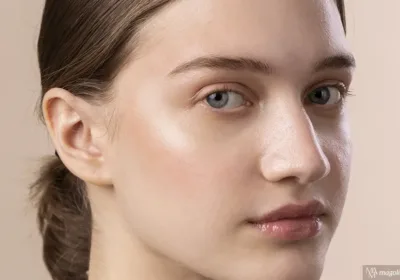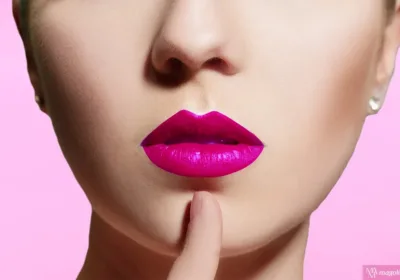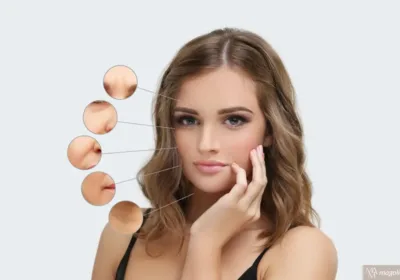Where Is Sculptra Injected?

“Where is Sculptra injected?” may be a question you have while researching injectables to achieve your aesthetic goals. But with the many available dermal fillers and injectables, it can be difficult to know which is right for you.
After all, there are also neuromodulators to consider. At Magnolia Medical & Aesthetics in San Antonio, TX, we offer Sculptra, a noninvasive injectable that adds plumpness to skin. So, if you have questions about Sculptra, we have answers.
Before deciding on any cosmetic treatment, we want you to feel empowered with knowledge so that you can make an informed decision about your treatment. In this spirit, we are answering a few common questions about Sculptra, including:
- What is Sculptra?
- Where is Sculptra injected?
- What precisely does it do?
What is Sculptra and How Does It Work?
Different from dermal fillers which contain natural or synthetic compounds, Sculptra is an injectable biostimulator. As such, it’s made of poly-L-lactic acid (PLLA). This injectable biostimulator has a liquid consistency and is injected underneath the skin. After injection, Sculptra integrates into the tissues and stimulates your body’s natural production of collagen.
Because of how Sculptra it’s made, it lasts longer than most dermal fillers and neurotoxins. In fact, results can last up to 2 years! Many skin care specialists consider Sculptra to be a great alternative to traditional surgery for helping to rejuvenate and restore aging skin.
Where is Sculptra Injected and What Does It Do?
Sculptra’s main goal is to restore volume which creates a more youthful appearance. Most commonly treated areas with this injectable include temples, mid-cheek region, lower face, and jowls.
To understand the results you can expect, let’s examine each area.
Temples
While the cheeks and eyes are more prominent areas of concentration, the temples are often overlooked. But the temples can also look hollow over time, falling victim to volume loss. And as the skin loses its natural elasticity, the hollowness becomes more noticeable. When Sculptra is injected into the deep planes of the temples, it significantly improves the face shape.
Mid-Cheek Region
A loss of volume in the cheeks is the first area that many of our patients notice first. Recent studies have noted that many people will have 10% facial fat loss by age 35. And without that fat, cheeks look less defined and flatter resulting in looking older than you are.
Fortunately, we can restore cheek volume in a very precise way by injecting Sculptra below the skin’s surface right on the cheekbone. To ensure the serum is evenly distributed, we massage the treated area. This lifts cheek pads, improves facial symmetry, and allows the serum to softly skim cheekbones to rejuvenate your whole face.
Lower Face
A lower sagging face is really a tell-tell sign of aging skin. For many people with a heart-shaped face, as they age, that heart begins to look more like a box. When the cheek pads move downward, it causes lines to develop that run from your nose to your mouth. Using targeted injections of Sculptra, we can correct this, which tones and tightens the skin, restoring a smooth face.
Jowls
As we age, many things happen to our body, both internally and externally, including losing facial fat. In essence, all the plumpness and volume we enjoyed in our youth migrates downward, settling around the jawline. When this happens, our natural contour in this area is blurred.
Unfortunately, this cannot be fixed with facial exercise. Because exercise target muscles, jowls are not the result of sagging muscles. Instead, we can use Sculptra to give your face a more sculpted appearance and restore volume loss.
Other areas commonly treated with this injectable include buttocks, underarms, and decollate. While answering questions like “Where is Sculptra injected?”, it’s important to know that this injectable should only be done by a licensed skin care provider. Preferably one that has master skills as an injector.
Where Should Sculptra NOT Be Injected?
Sculptra should only be injected in specific areas due to how it works. Injecting Sculptra into unsuitable areas can result in uneven skin texture and even unknown side effects. Given these points, we recommend NOT injecting Sculptra into the forehead area, around the eyes or lips, on the nose, or between the eyebrows. For these areas, neurotoxins like Botox or dermal fillers such as Juvederm are more suitable options.
Sculptra Injection Results and Recovery Time
As previously state, Sculptra injections are not like neurotoxins or dermal fillers where results can been seen immediately. Instead, Sculptra works gradually, showing visible results in about 6 to 8 weeks. And there’s a reason for this process. That is, unlike fillers, Sculptra helps gradually build collagen over time.
After a Sculptra treatment, there is no downtime or recovery period. However, you should not apply direct pressure to the injection sites for several ays after treatment. If pressure is applied to the area, it can disperse the solution under your skin and affect the way your results develop.
The long and short…
“Where is Sculptra injected?” is just one of many common questions we get about this volume-restoring injectable. Now that you have more facts about Sculptra, are you ready to discuss your options? Our skin care professionals would love to help you!
Request an Appointment at Magnolia Medical & Aesthetics
Book online or call (210) 600-3335 to learn more about Kybella injections for your chin.
You may also enjoy reading: Does Kybella Work For Everyone?





